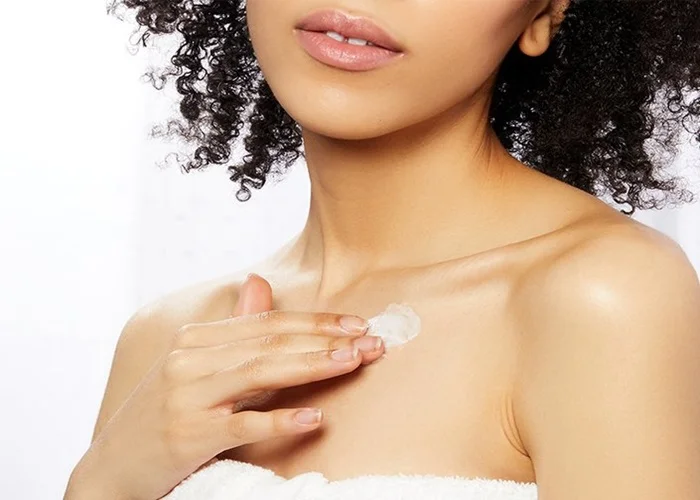The quest for youthful skin often focuses on the face, with many individuals investing in skincare routines that prioritize facial care. However, one area that frequently gets overlooked is the chest, or décolletage. This region is susceptible to wrinkles and fine lines due to various factors, including aging, sun exposure, and lifestyle choices. As we age, the skin loses collagen and elasticity, making it more prone to creasing and sagging. In this article, we will explore effective strategies to prevent and treat chest wrinkles, ensuring that this often-neglected area remains smooth and youthful.
Understanding Chest Wrinkles
Causes of Chest Wrinkles
Chest wrinkles can develop due to several reasons:
Aging: As we age, our skin naturally loses collagen and elastin, leading to a decrease in firmness and elasticity.
Sun Exposure: The chest area is often exposed to harmful UV rays, which can accelerate skin aging and contribute to wrinkle formation.
Lifestyle Factors: Smoking, poor hydration, and inadequate skincare can all exacerbate the appearance of wrinkles on the chest.
Sleeping Positions: Side sleeping can cause the skin to fold and crease over time, leading to permanent lines.
Importance of Preventive Care
Preventing chest wrinkles is far more effective than treating them after they appear. Incorporating preventive measures into your daily routine can significantly reduce the likelihood of developing wrinkles in this area. By treating your chest with the same care as your face, you can maintain a youthful appearance for longer.
Daily Skincare Routine for Chest Care
Cleanse
Start with a gentle cleanser that removes dirt and impurities without stripping the skin of its natural oils. Use a mild formula designed for sensitive skin to avoid irritation.
Exfoliate
Incorporate exfoliation into your weekly routine. Use chemical exfoliants such as glycolic acid or lactic acid once a week. These ingredients help promote cell turnover and improve skin texture by removing dead skin cells.
Moisturize
Apply a rich moisturizer specifically formulated for the décolletage. Look for products containing hyaluronic acid, which helps retain moisture in the skin. Regular moisturizing keeps the skin plump and reduces the appearance of fine lines.
Sun Protection
Applying sunscreen is crucial in preventing chest wrinkles. Use a broad-spectrum sunscreen with an SPF of 30 or higher every day, even on cloudy days. Reapply every two hours if you are outdoors or sweating.
Lifestyle Changes to Prevent Chest Wrinkles
Avoid Sun Exposure
Limit sun exposure during peak hours (10 AM – 4 PM) when UV rays are strongest. Wear protective clothing or seek shade whenever possible.
Quit Smoking
Smoking accelerates skin aging by reducing blood flow and oxygen supply to the skin. Quitting smoking can improve overall skin health and reduce wrinkle formation.
Stay Hydrated
Hydration plays a vital role in maintaining skin elasticity. Aim to drink at least eight glasses of water daily to keep your skin hydrated from within.
Adjust Sleeping Positions
If possible, train yourself to sleep on your back instead of your side. This position helps prevent the skin from folding and creasing during sleep.
Advanced Treatments for Chest Wrinkles
If preventive measures are not enough, consider exploring advanced treatments that can help reduce existing wrinkles.
Chemical Peels
Chemical peels involve applying a solution that exfoliates the top layer of skin, promoting new cell growth and improving texture. This treatment can enhance the appearance of fine lines on the chest.
Laser Treatments
Laser treatments stimulate collagen production by delivering targeted energy to the skin’s deeper layers. This procedure can significantly improve skin texture and reduce wrinkles.
Microneedling
Microneedling involves using tiny needles to create micro-injuries in the skin, stimulating collagen production. This treatment can help smooth out wrinkles and improve overall skin tone.
Retinoids
Incorporating retinoids into your skincare routine can enhance cell turnover and improve collagen production. Use retinoid creams specifically designed for sensitive areas like the chest a few times per week.
Nutritional Support for Skin Health
Antioxidant-Rich Foods
Eating a diet rich in antioxidants can help combat free radical damage caused by sun exposure and pollution. Include foods like berries, leafy greens, nuts, and seeds in your meals.
Omega-3 Fatty Acids
Omega-3 fatty acids support skin health by maintaining its barrier function and reducing inflammation. Foods such as fatty fish (salmon), flaxseeds, and walnuts are excellent sources.
Conclusion
Maintaining youthful-looking skin on your chest requires consistent care and attention. By adopting a comprehensive skincare routine that includes cleansing, exfoliating, moisturizing, and sun protection, you can significantly reduce the risk of developing wrinkles in this area. Additionally, making lifestyle changes such as quitting smoking, staying hydrated, and adjusting sleeping positions will further enhance your efforts.
For those already experiencing chest wrinkles, advanced treatments like chemical peels, laser therapy, microneedling, and retinoid creams offer effective solutions. Remember that prevention is always better than cure; therefore, start caring for your chest today just as you do for your face. With dedication and proper care, you can achieve smooth and youthful-looking skin on your décolletage for years to come.
Related topic:
What to Do for Chest Wrinkles?
What is the best cream for chest wrinkles?
How Can I Reverse Wrinkles Naturally?


